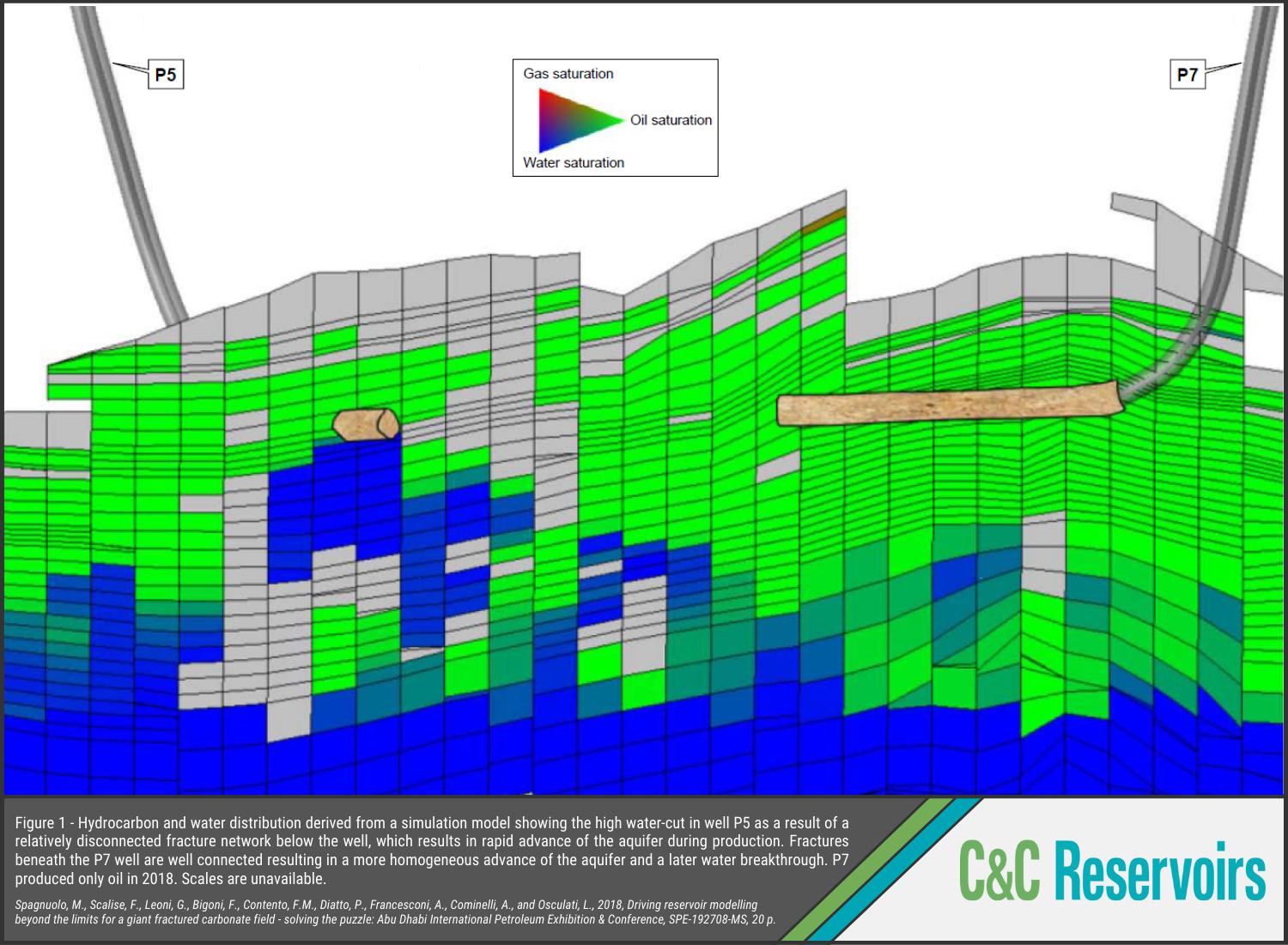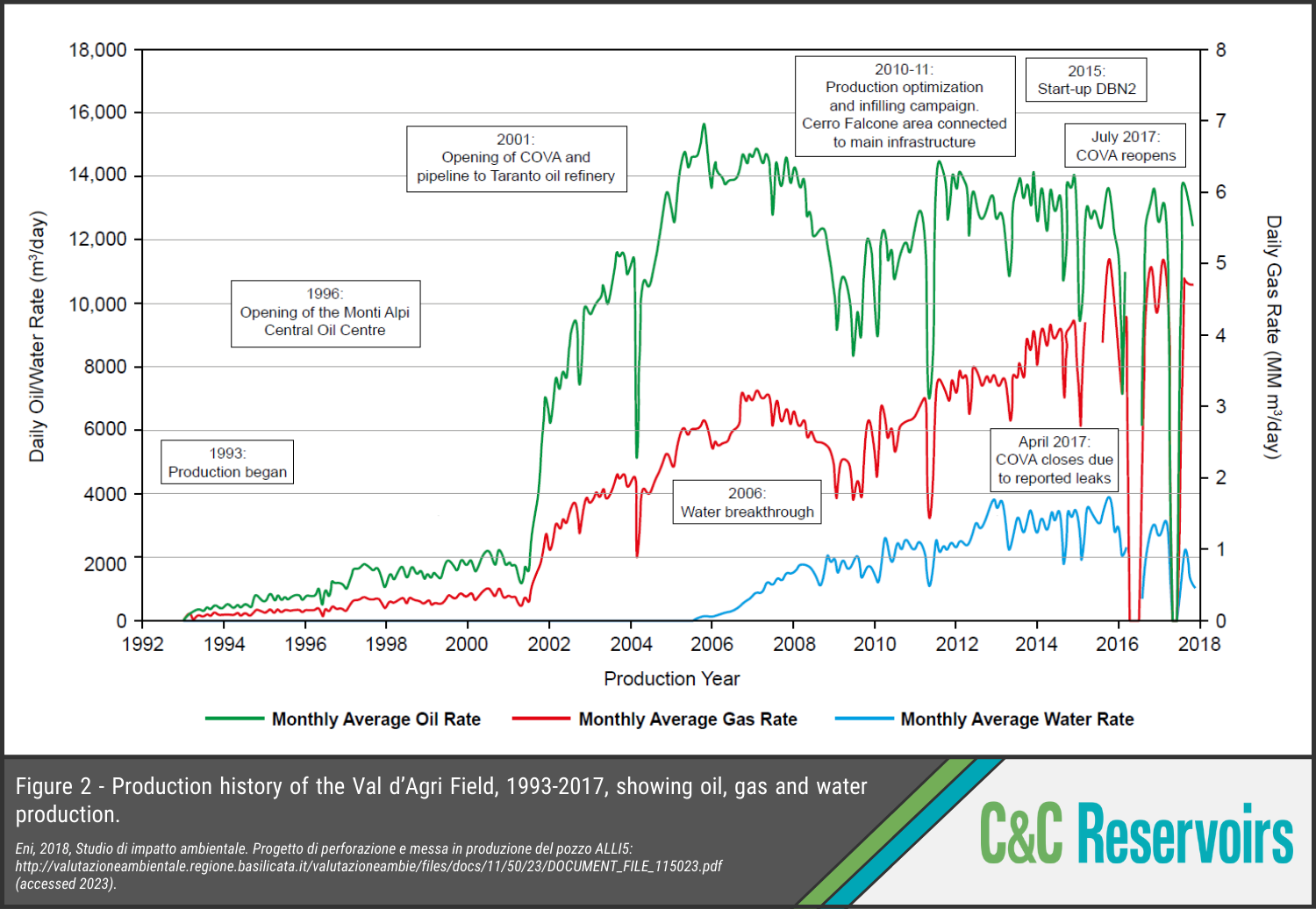The Val d’Agri Field
Analogue Spotlight
Hidden beneath a mountainous national park, the Val d’Agri Field in Italy hosts hydrocarbons within Apulian platform carbonates. Despite having a significant STOIIP of 4500 MMBO and EUR of 939 MMBO, the complex structure of the fractured/karstified carbonate, combined with a protected surface environment, severely hindered development.
Owing to the sensitive nature of drilling, minimal surface well pads were permitted, requiring flexibility so wells could be re-entered and reduce the need for additional surface disruptions. By using a ‘clustered approach’ and targeting multiple fault zones within the fractured carbonate, undrilled parts of the reservoir could be reached through a combination of horizontal, dual-lateral and multilateral wells (Figs. 1 and 2).
Boosts in production were facilitated using numerous well techniques, including:
- Downhole orientation devices to allow for re-entry into wells.
- Well surveillance systems to mitigate risk by facilitating early identification of potential issues.
- Acid stimulation / coiled-tubing underbalanced acid washing to maximise well productivity.
- Managed pressure drilling to improve accessibility to previously inaccessible portions of the reservoir.


